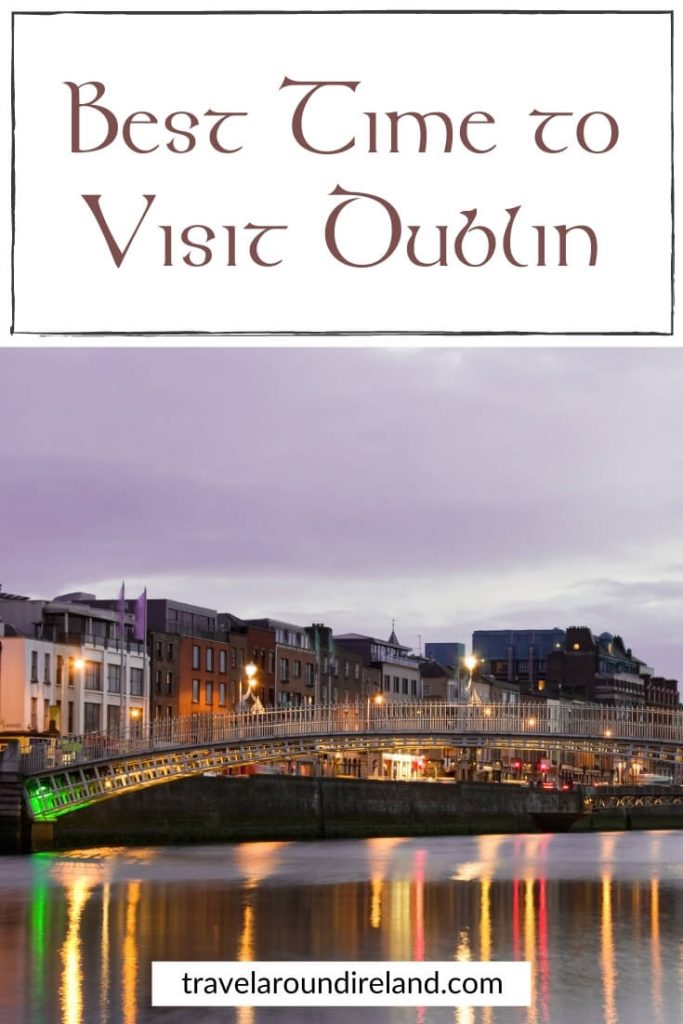If you are planning a visit to the Irish capital and wondering “when is the best time to visit Dublin?”, then this post is for you.
As a Dubliner, I’m going to help you decide when to visit Dublin by giving you a guide to the city in each season to make that decision easier.
Now for me, there are a few times of year that I prefer returning home and visiting our families.
There are also certain times of the year I avoid going into the city centre, and I’ll share those with you and why.
Best time to visit Dublin
Weather can be a big deciding factor when people book their trips to Ireland. Despite its location, Ireland has a milder climate and warmer weather than countries on the same latitude. This is all thanks to the Gulf Stream in the Atlantic Ocean, although climate change is starting to have an impact.
Ireland and Dublin’s weather is dominated by an abundance of rainfall and a lack of real temperature extremes. That said, the weather can feel very different depending on when you visit.
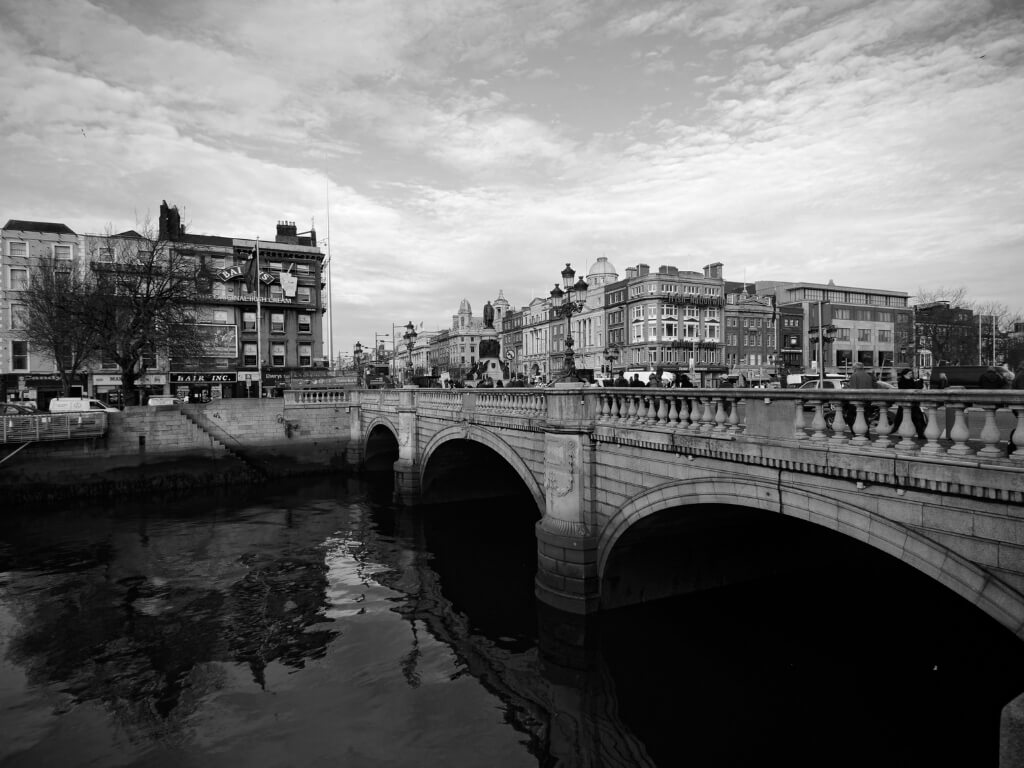
Best Time to Go to Dublin – Things to consider
When it comes to deciding the best times to visit Dublin, there are a few things to consider.
Budget – Dublin is an expensive city, there is no getting away from it. So, if you are trying to visit Ireland on a budget, then when planning a trip to Dublin, when you go needs careful consideration. Winter is the cheapest time to visit as there are fewer crowds but there is a trade-off which I discuss further on.
What are you going for – Your reason for visiting Dublin, Ireland can also be a factor in when you decide to make that trip. If you are on a tight schedule, or only have a few days and want to cram in as much sightseeing as possible in the longest of days, summer is the best time to do it. But, if you are visiting for more than a few days, you can take things slower and visit outside of the busy summer months.
Do you want to avoid the crowds – If you want to avoid crowds at Dublin’s popular tourist attractions, then visiting Dublin during the summer is not advisable. The same can be said for March around the St Patrick’s Day celebrations. There are a lot fewer visitors in winter but also fewer daylight hours and colder, wetter weather.
Weather – Deciding the best time to go to Dublin can simply come down to the weather. As mentioned, while Ireland has milder weather for its latitude than expected, winters can be cold and wet and summer is generally warm but with the potential to be wet as well. So, if the weather is your deciding factor, the best months to visit Dublin are going to be summer, the busy months.
Best time to visit Dublin – Month-by-month guide to Dublin weather
The best time to travel to Dublin comes down to a few factors as already mentioned but many visitors base their trip around the weather. To help you narrow things down for yourself, here is a month-by-month guide to the weather in Dublin.
| Month | Season | High Temp (C) | Low Temp (C) | # of Daylight Hours |
|---|---|---|---|---|
| January | Winter | 8 | 2 | 8 |
| February | Winter | 8 | 2 | 10 |
| March | Spring | 10 | 3 | 12 |
| April | Spring | 13 | 4 | 14 |
| May | Spring | 15 | 6 | 16 |
| June | Summer | 18 | 9 | 17 |
| July | Summer | 20 | 11 | 16.5 |
| August | Summer | 20 | 11 | 15 |
| September | Autumn | 17 | 9 | 12.5 |
| October | Autumn | 14 | 7 | 10.5 |
| November | Autumn | 10 | 4 | 8.5 |
| December | Winter | 8 | 3 | 7.5 |
January – Typically, January is the coldest month of the year. Dublin weather in January has average highs of 8°C that are offset with average lows of 2°C. Days are short, and rain is common, with occasional snow on higher ground. The chilly winds can make the temperatures outside feel colder than it is, and with that chill can come ice so take care if driving around Dublin early in the day. Winter coats are a must.
February – Dublin in February is cold, and often windy with the most probability of storms. Despite the cold, February is one of the driest months of the year. Temperatures are similar to January, so don’t pack away that winter coat!
March – With the arrival of spring comes slightly warmer temperatures, although only by a degree or two. Days are starting to become longer and you might be treated to a few hours of sunshine if the clouds aren’t in the sky. Temperatures in Dublin in March have highs of 10°C and lows of 3°C. It is not unheard of for there to be snow on the coldest days of March. In fact, in the last few years, there has been heavy snowfall in the city. So, if you are visiting Dublin in March, make sure to pack waterproofs, warm clothes and hats and gloves. Just-in-case.
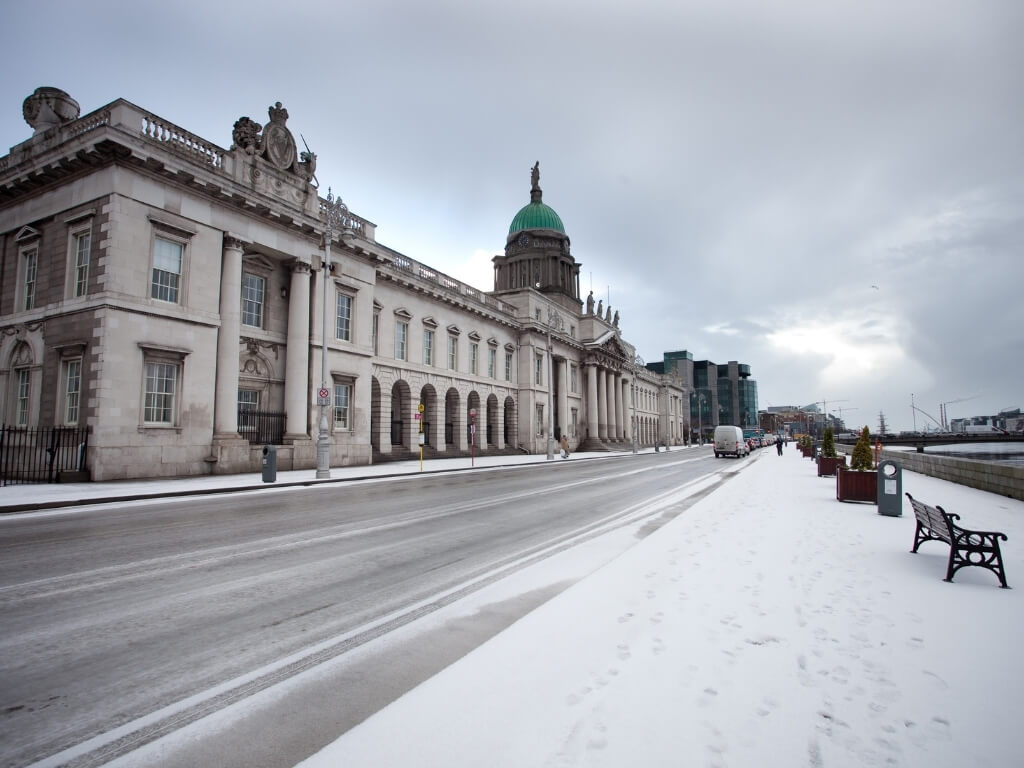
April – With the clocks having gone forward at the end of March, Dublin in April sees days that are starting to stretch, temperatures are becoming warmer, with highs of 13°C and lows of 4°C. Rain is still common but to a lesser degree than the winter months. With longer days and warmer weather, April is the start of the best time of year to visit Dublin.
May – Dublin weather in May sees fine, sunny days with average daily temperatures now heading to highs of 15°C and lows of 6°C. May is probably the best month to visit Dublin due to these factors and low numbers of tourists. That said, while the days are sunnier and longer, there is always the chance of rain in Dublin so don’t forget the umbrella and rain jacket.
June – Dublin weather in June is warm and sunny and the weather continues to improve with highs of 18°C and lows of 9°C. You’ll be treated to no less than 17 hours of daylight, with the longest day of the year occurring during this month, and the brightness lingering until around 10pm. Although June is one of the driest months of the year when it comes to rain, you cannot be guaranteed not to see some, so keep a light rain jacket or umbrella handy. Be aware that with the warm weather and long days comes the influx of tourists to Dublin.
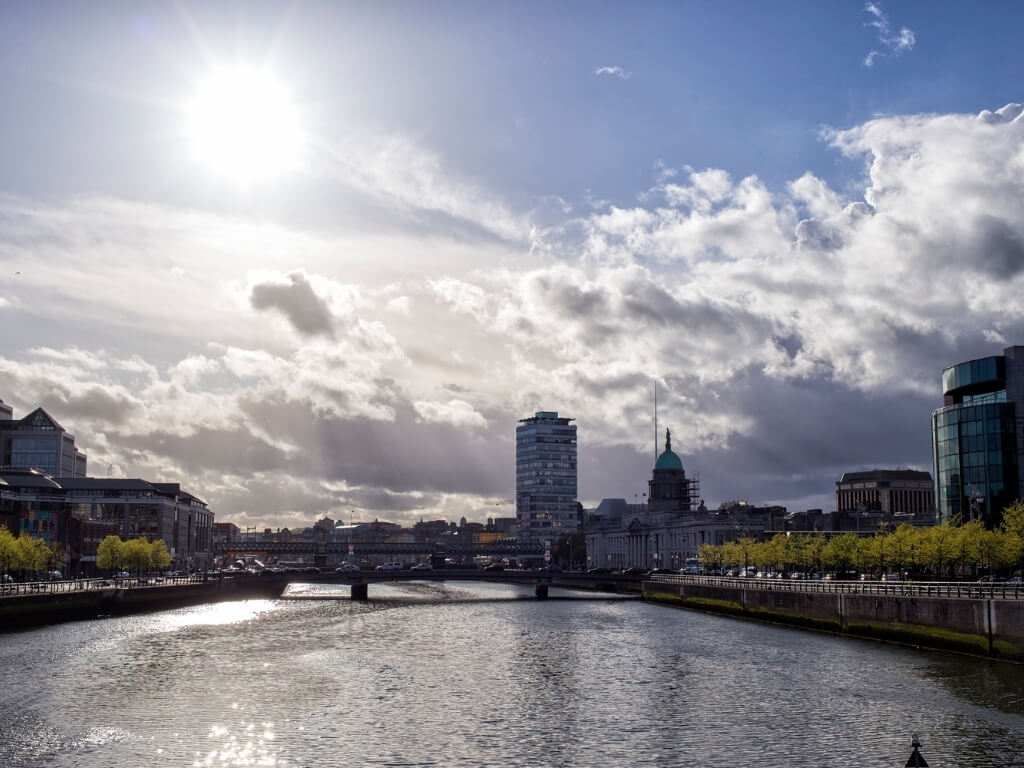
July – The best time of the year to visit Dublin for warm weather is July, the hottest month of the year with highs of 20°C and lows of 11°C. The temperature of the sea is at its warmest and you should pack some sunscreen if you are planning on venturing outside for any length of time. The UV factor of the sun is at its strongest during July and you can easily get burnt. As always, you cannot be guaranteed not to see rain but as one of the driest months of the year, hopefully, you’ll be lucky. The weather in July is often perfect for festivals, visiting parks and enjoy outdoor activities. This also makes it one of the busiest months of the year for tourists in Dublin.
August – Despite being one of the warmest months of the year, Dublin in August can be pretty wet. However, it generally doesn’t last long and is often just a summer shower before becoming sunny and warm again. Temperatures are often the same as July and it is a pleasant month to visit the city. However, if you plan to visit Dublin, Ireland during August, be prepared for lots of tourists, both foreign and home-grown.
September – Dublin weather in September can see a slight dip in temperatures with average high temperatures of 17°C and lows of 9°C, yet still a good amount of daylight hours for sightseeing. There is often more sun than rain in September making it a very pleasant month to visit the Irish capital, especially towards the latter half of the month when visitor numbers decrease drastically compared to the previous summer months.
October – Dublin in October starts to have a change in weather. Cooler air makes an appearance with highs of 14°C and lows of 7°C. Autumn leaves start to change colour and begin to fall and, while rain is almost guaranteed, it can be one of the best months to visit Dublin to avoid the crowds so long as you wrap up warm and go prepared with a raincoat.
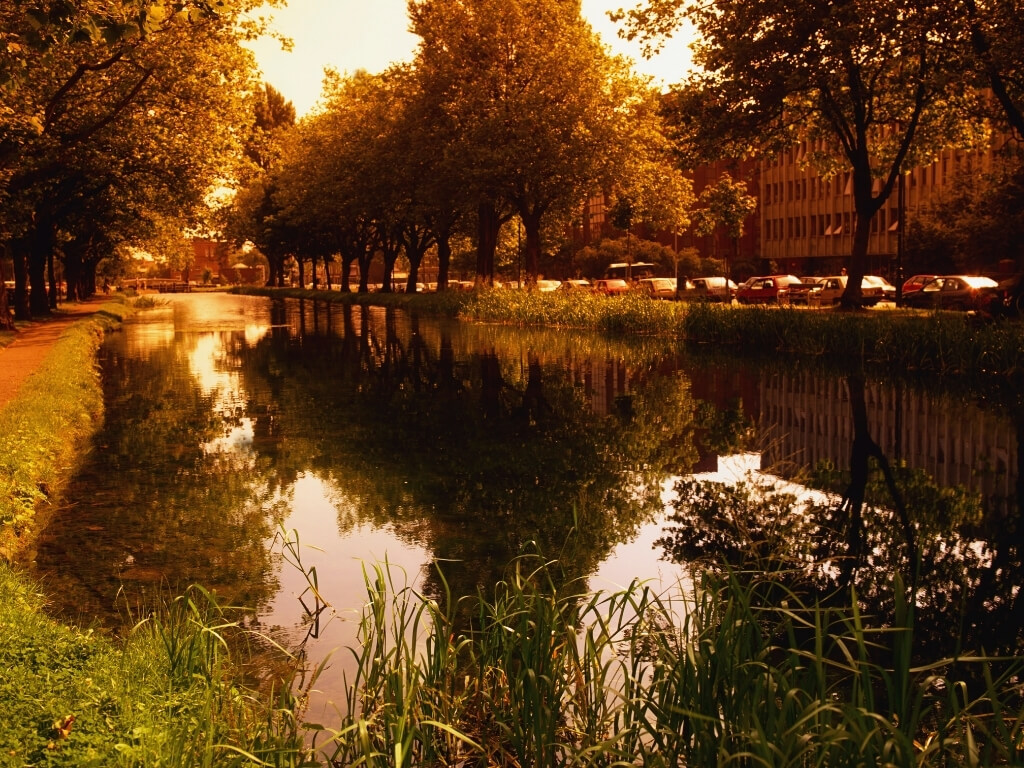
November – The last month of autumn sees it turning colder and frosty with temperature highs of 10°C and lows of 4°C. Both sunshine hours and daylight hours reduce and outdoor activities and attractions can make way for more indoor things to do. With the clocks having turned back at the end of October, Dublin in November has days that are noticeably shorter ahead of the start of winter.
December – Dublin weather in December is often the wettest of the year with high temperatures of 8°C and low temperatures of 3°C. That said it is not unheard of for temperatures to dip below freezing and snow can occur too. The days are the shortest of the year, with darkness creeping in just after 4pm. And sunshine hours are greatly reduced during December in Dublin as well. If you are driving in the city in the early morning, take care as fog and ice can often occur. It is more advisable to forget driving and instead opt for public transport by bus, train or tram instead.
So, if you are trying to decide when to visit Dublin and weather is a consideration, go prepared with a raincoat and umbrella, and either be prepared with layers for Dublin in winter or crowds in summer.
Choosing the best time to go to Dublin
Choosing the best time to go to Dublin could depend on the purpose of your visit and whether you want to indulge in something such good weather, sightseeing, shopping or even festivals. This section might help make your decision easier.
When is the best time to go to Dublin – Public Holidays Guide
Before you make a decision on when to plan your Dublin visit, you need to be aware of the public holidays in Ireland. This is for several reasons.
Although March is at the start of spring, with cold days, it is also one of the busiest and most expensive times to visit Ireland thanks to the national holiday in honour of the patron saint of Ireland. St Patrick’s Day, on the 17th of March, is celebrated in Dublin by a festival that takes place in the days leading up to the 17th.
As a result, both flights and accommodation can be hugely expensive due to the large numbers of expats and visiting tourists descending on the city to experience one of the biggest days on the Irish calendar. Although I have been in Dublin during this time, I avoid going into the city centre to avoid the crowds.
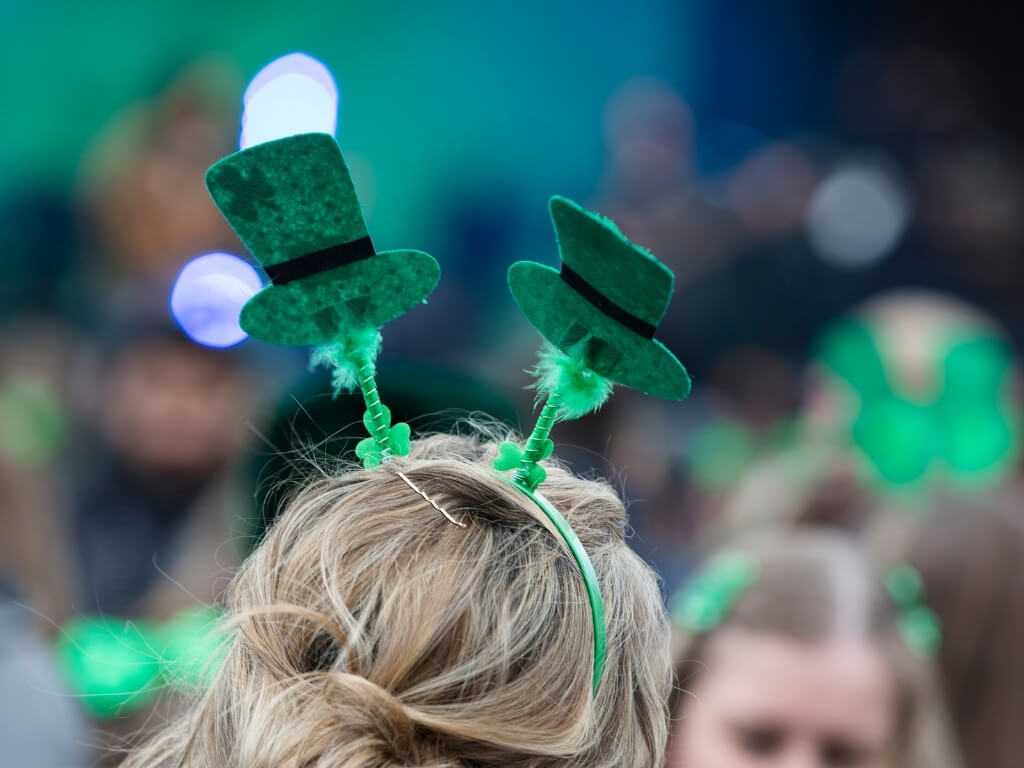
Other busy weekends in the city include the May Day weekend, June bank holiday weekend and of course leading up to Christmas. Here is a list of the public holidays in the Republic of Ireland.
- January 1st – New Year’s Day
- First Monday in February – Imbolc/St Brigid’s Day (unless February 1st falls on a Friday in which case the bank holiday will fall on a Friday)
- March 17th – St Patrick’s Day
- Good Friday/Easter Monday (generally late March or early April)
- First Monday in May (May Day)
- First Monday in June
- First Monday in August
- Last Monday in October
- December 25th – Christmas Day
- December 26th – St Stephens Day
Note: Good Friday is not a bank holiday in Ireland but most schools and businesses close that day.
Best season to visit Dublin
Tourist seasons play a big role in deciding the best time to travel to Ireland.
Peak or High season in Dublin runs during the summer months of June to August. The days leading up to St Patrick’s Day on March 17th is also the peak of the tourist season in Dublin. This time in March and the summer months are the busiest months with a huge influx of visitors. Except for March, summer is warm and mostly dry with days of brightness and sunny spells lasting around 15 hours, perfect for fitting in lots of sightseeing into your Dublin itinerary. But, and this is a big but, these are the most expensive times to visit the Irish capital with hotels in demand, higher flights costs and lots of queues at the popular tourist attractions.
As already mentioned the week around St Patrick’s Day is also busy with visitors from around the globe descending on the capital to enjoy the festivities and to take part in the annual St Patrick’s Day Parade in the city centre. And if Ireland happens to be playing a home game in the Six Nations rugby championship during that same period, you can add visiting rugby fans into the mix.
The Shoulder season in Dublin is from April to May and mid-September to mid-October. This can be one of the best times to visit Dublin. In April and May, the days are getting warmer and brighter, while after mid-September, the summer crowds have left after kids return to school. With fewer crowds comes lower costs for hotels and accommodation and lower flight prices. So, if you are looking to visit Ireland on a budget, the shoulder season (or low season, see below) are the best times to visit Dublin and Ireland as a whole. If Easter falls in April, this is my preferred time of year to visit Dublin and Ireland.
The Low season in Dublin is mid-October to early March (before St Patrick’s Day). With this time of the year representing the coldest and wettest months, there are few tourists around. Reduced daylight hours means less time for sightseeing and so fewer crowds. But, if you plan your time right, you can enjoy the city during a quieter period, coupled with lower accommodation costs and perhaps a steal on your flight costs. Just pack accordingly with layers, waterproofs and a good winter jacket. However, just before and around Christmas you can find prices increasing with people returning to Ireland to spend Christmas with family.
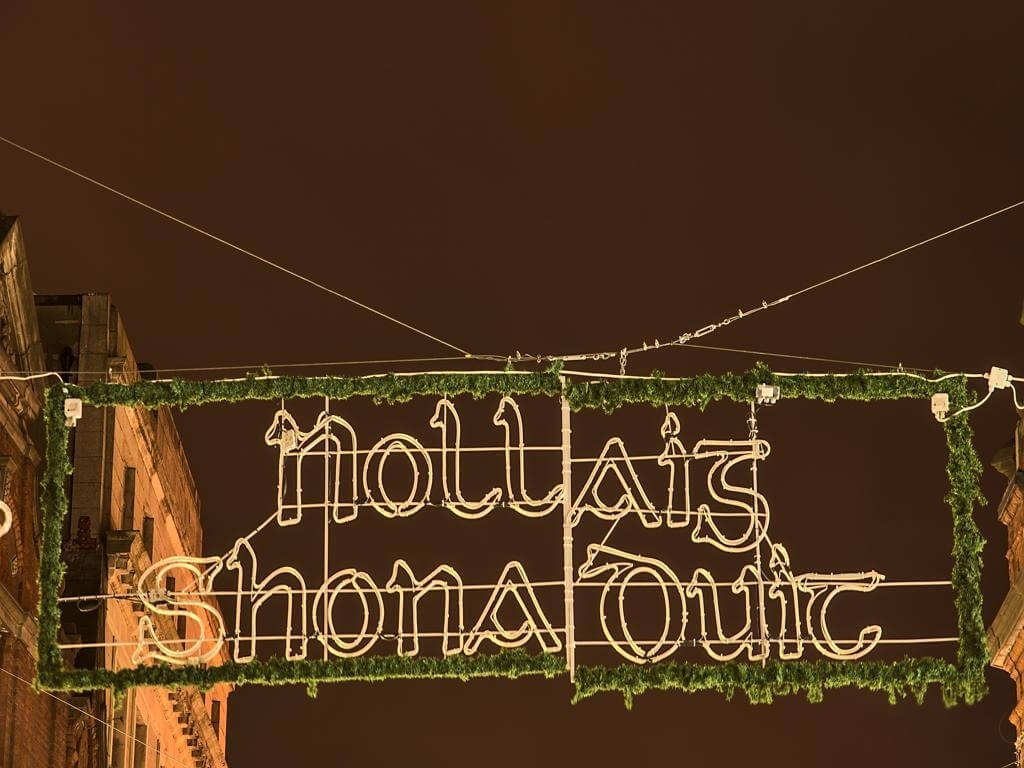
What is the best time to visit Dublin for good weather?
If good weather is a must for your Dublin trip, then the summer months are the best ones to plan your trip for. While the days are noticeably warmer compared to the winter, you could see rain and you must be prepared for a packed city.
All attractions are open during summer and there are generally lots of activities on offer for tourists visiting from June to August. Summer can also be the best time to visit Dublin for festivals, particularly outdoor ones.
However, along with visiting tourists, you could find the city busy with both Irish holiday makers and Dubliners themselves on a day out with the kids. Irish schools finish in June, secondary at the start and primary at the end, and they don’t return until the end of August. So bear this in mind.
If you want to avoid the cold and take a chance at missing the worst of the rain, then summer is the time to visit Dublin. But, if you don’t mind the cold or a bit of rain take advantage of the less expensive and less crowded low or shoulder season months.
What is the best time of year to visit Dublin for sightseeing?
If you are planning on doing a lot of sightseeing during your visit to Dublin, then the low or shoulder seasons are the best time to go. The crowds are less than those found during the summer months meaning queues and waiting times are vastly reduced. That said you might be limited in how much you can do in a day by the daylight hours, so keep this in mind.
Winter sees on average 8 hours of daylight but the shoulder season has between 11 and 16 hours of daylight, depending on the month (see the table). If you are only visiting Dublin for a short period, perhaps a weekend, and want to do as much as possible, then the summer months enjoy 16.5 hours of daylight per day, making them ideal for cramming it all in.
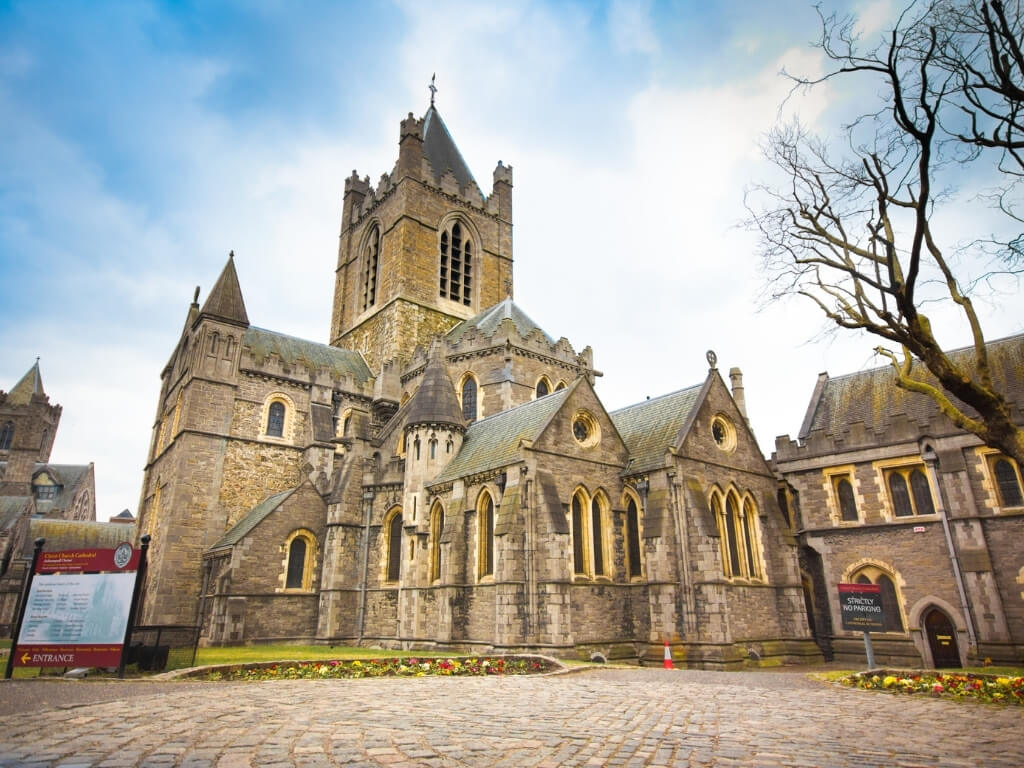
When is the best time for festivals in Dublin?
If you are interested in enjoying a festival while you are in Dublin, here is a handy list of the best festivals in Dublin, month-by-month. Some of the best take place in the city in March and during summer, but unfortunately, they go hand-in-hand with the most expensive times to visit Dublin.
January – The Temple Bar Tradfest usually occurs towards the end of January, while the Chinese New Year may occur at the end of January or the beginning of February.
February – Chinese New Year festival (if it doesn’t occur in January) and the Dublin International Film Festival take place this month. Although not a festival as such, the Six Nations Rugby Championship usually starts in February.
March – The St Patrick’s Day festival is a five-day festival leading up to the 17th of March, which is St Patrick’s Day, culminating in a parade through the centre of Dublin City. The Dublin Bay Prawn Festival also takes place this month. If Easter Sunday falls in March you will also find commemorations of the 1916 Easter Rising taking place in the city. The Dublin ComiCon is also held in March.
April – The 1916 Easter rising commemorations take place this month if Easter Sunday is in April. There is also a book festival which takes place in the city this month called One City One Book.
May – The Dublin Docklands Summer Festival usually commences this month and is joined by the Dublin Dance Festival and the Dublin International Literature Festival.
June – This is a busy month for festivals with the biggest being the day honouring James Joyce, Bloomsday on the 16th of June. As well as this literary-inspired day, Dublin Pride is in June as well as a Taste of Dublin.
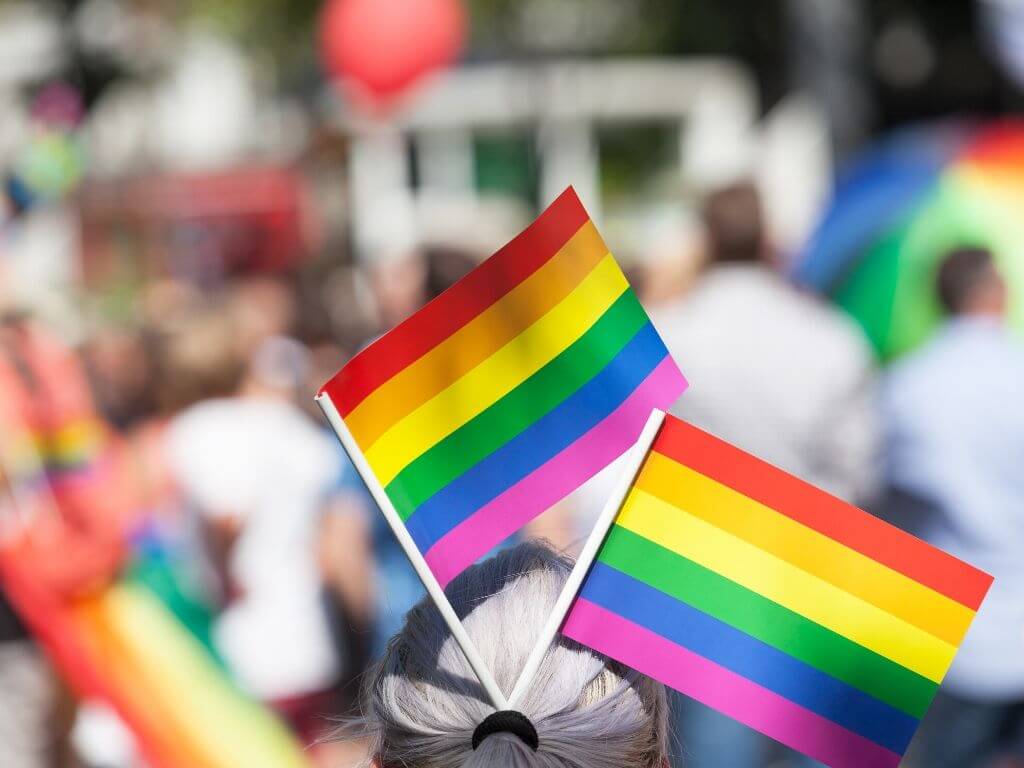
July – Another busy summer month for festivals, July sees the Festival of Curiosity, the City Spectacular and the Longitude Music Festival come to the city. You could also enjoy the Dun Laoghaire Regatta this month. The city also sees the PhotoIreland Festival being held in the city.
August – During August, the Dublin Horse Show is in town along with the Big Grill Festival (a BBQ festival). The Dalkey Lobster Festival is also held this month.
September – The Dublin Fringe Festival is in town during September along with the Dublin Theatre Festival and Culture Night. And although it is not a festival, the All-Irish GAA championships take place in the city this month, bringing a festival-like atmosphere to the city.
October – The crowds have gone but not the festivals. This month everyone gears up for Halloween along with the Bram Stoker Festival, the Dublin City Marathon and the Dublin Festival of History.
November – A quieter month, November welcomes the Dublin Book Festival.
December – Be advised that December the 8th is the traditional shopping day in Dublin for the rural population, so it will get busy. As for festivals, the biggest of the year after the St Patrick’s Day celebrations is, of course, on New Year’s Eve. The New Year’s Eve Festival lights up the city with the Midnight Moments fireworks spectacular. After St Patrick’s Day, this is one of the best Irish festivals.
Best time to visit Dublin for shopping
If retail therapy is your thing, then the best time to visit Dublin to shop till you drop is just after Christmas, into early January. The January sales are when you are bound to bag a bargain and some of the Sales start on St Stephen’s Day, the 26th of December.
So, when is the best time to visit Dublin?
I hope this guide has helped you decide when the best time for you to visit Dublin is.
There is no true dry season in Dublin but if warmth is a necessity, then summer is the time to go.
If you don’t mind wrapping up well and want to keep costs down, winter is the best time to visit the city to avoid the crowds.
Whatever time of the year you visit Dublin, you are sure to have an amazing time in the city.
Read more about visiting Dublin:
- Top 10 Dublin Attractions
- How to Get around Dublin by Bus, Tram, Train, on Foot, and More
- Best Time to Visit Dublin
- 3-Day Dublin Itinerary
- One Day Dublin Itinerary
- Best Free Museums and Galleries in Dublin
- Unique Things to Do in Dublin
- Best Free Things to Do in Dublin
- Best non-Tourist Pubs to Visit in Dublin
- Best Cliffs of Moher Tours from Dublin
- Best Whiskey Tours of Dublin
- Best Food Tours of Dublin
- Best Walking Tours of Dublin
- The Two Fascinating Capitals of Ireland: Dublin and Belfast
